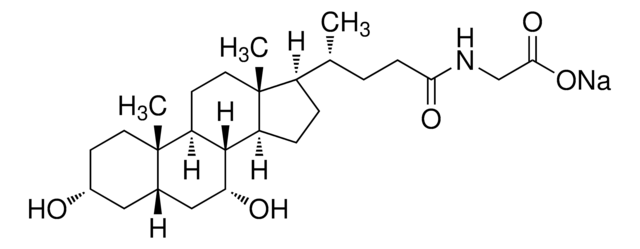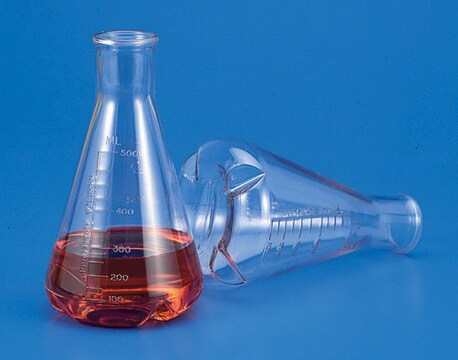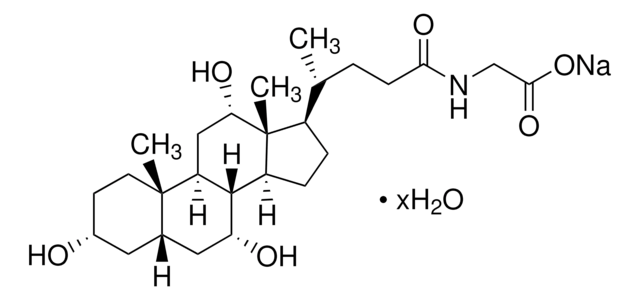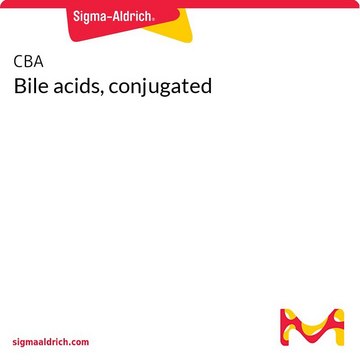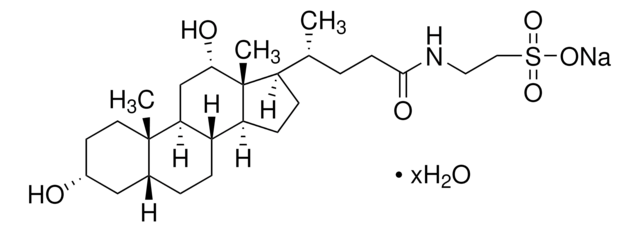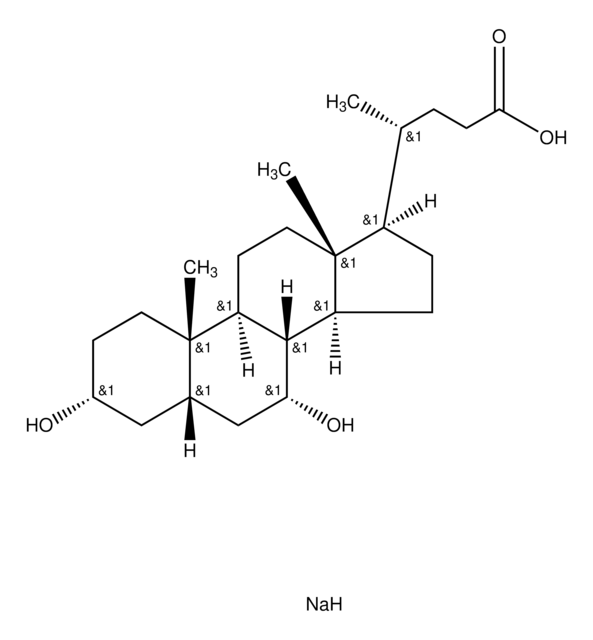G0759
Glucoquenodesoxicolato de sodio
Sinónimos:
N-(3α,7α-dihidroxi-24-oxocolan-24-il)glicina sodium salt, N-(carboximetil)amina del ácido (3α,7α-dihidroxi-5β-colanoico sodium salt, Ácido glucoquenodesoxicólico sodium salt
About This Item
Productos recomendados
description
anionic
Quality Level
form
powder
mol wt
471.61 g/mol
technique(s)
HPLC: suitable
protein quantification: suitable
functional group
sulfonic acid
shipped in
ambient
storage temp.
room temp
SMILES string
[Na+].C[C@H](CCC(=O)NCC([O-])=O)[C@H]1CC[C@H]2[C@@H]3[C@H](O)C[C@@H]4C[C@H](O)CC[C@]4(C)[C@H]3CC[C@]12C
InChI
1S/C26H43NO5.Na/c1-15(4-7-22(30)27-14-23(31)32)18-5-6-19-24-20(9-11-26(18,19)3)25(2)10-8-17(28)12-16(25)13-21(24)29;/h15-21,24,28-29H,4-14H2,1-3H3,(H,27,30)(H,31,32);/q;+1/p-1/t15-,16+,17-,18-,19+,20+,21-,24+,25+,26-;/m1./s1
InChI key
AAYACJGHNRIFCT-YRJJIGPTSA-M
¿Está buscando productos similares? Visita Guía de comparación de productos
General description
Application
Biochem/physiol Actions
Replaced by
Storage Class
11 - Combustible Solids
wgk_germany
WGK 3
flash_point_f
Not applicable
flash_point_c
Not applicable
ppe
Eyeshields, Gloves, type N95 (US)
Elija entre una de las versiones más recientes:
¿Ya tiene este producto?
Encuentre la documentación para los productos que ha comprado recientemente en la Biblioteca de documentos.
Los clientes también vieron
Artículos
Today, diverse studies report the benefits of probiotics, such as inhibitory effects on pathogens, aid in the management or prevention of chronic intestinal inflammatory diseases or atopic syndromes, and support to the immune system. Potential beneficial applications abound, researchers continue to evaluate the effictiveness and clarify the mechanisms of action of probiotics.
Protocolos
This method is particularly useful in research into the role of individual bile acids as signaling molecules; suitable for clinical laboratories to investigate potential mechanisms linked to gut hormone profiles and glycemic control.
Contenido relacionado
Bile Acids (BA) are synthesized in the liver and play important roles in cholesterol homeostasis, absorption of vitamins and lipids, and various key metabolic processes.
Nuestro equipo de científicos tiene experiencia en todas las áreas de investigación: Ciencias de la vida, Ciencia de los materiales, Síntesis química, Cromatografía, Analítica y muchas otras.
Póngase en contacto con el Servicio técnico